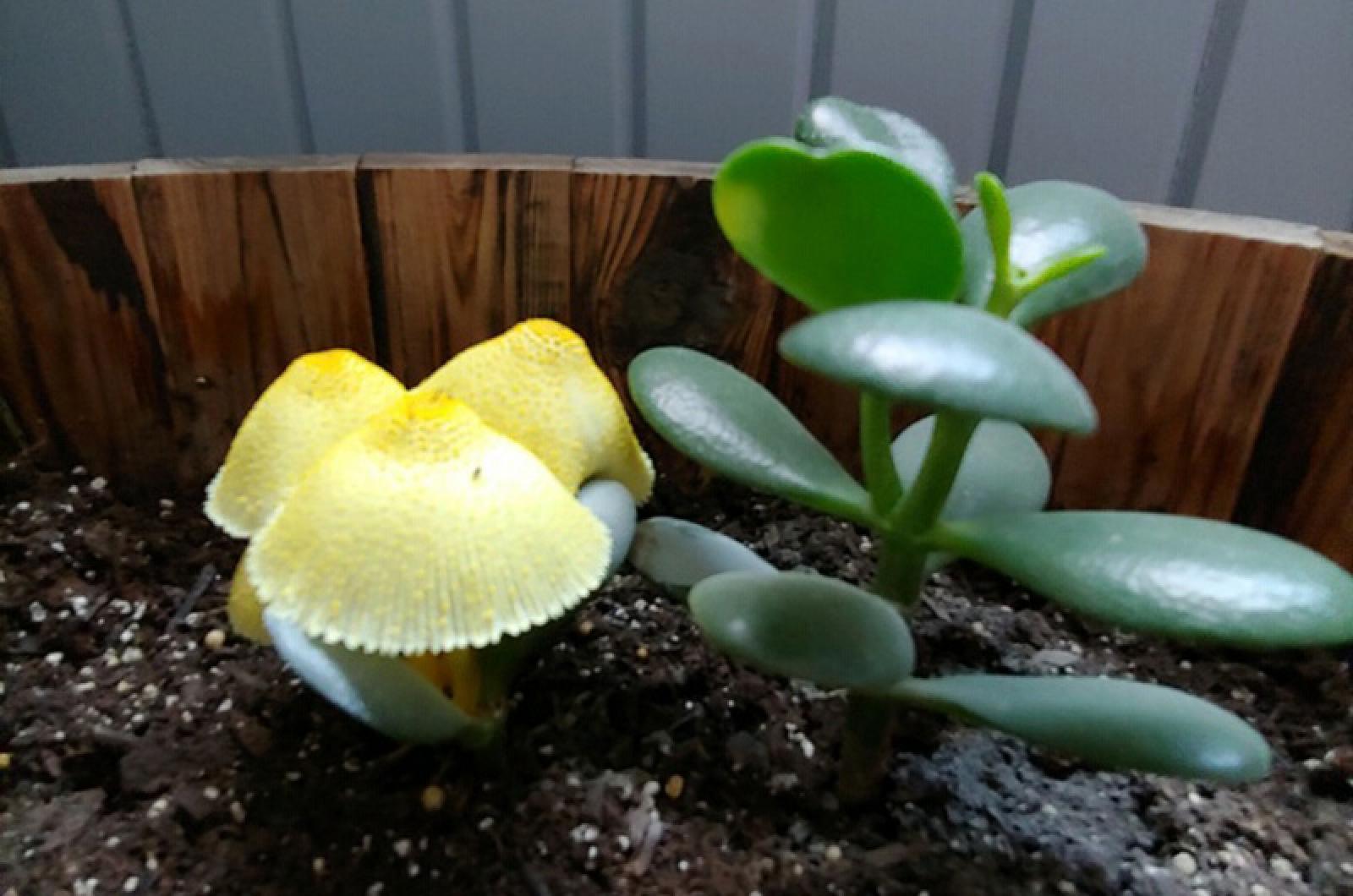Marion Hammond of Tisbury is a very effective caregiver and nurturer who has raised and tended to a husband and three sons, countless businesses and organizations, and a 27-year-old jade plant. This plant has been a constant in her life and her home over the last nearly 30 years.
Last week she reached out to report a strange occurrence: the family is fine, but the jade has company. A bevy of yellow mushrooms have sprouted from the potted plant.
The mushrooms in question are, not surprisingly, called yellow houseplant or flowerpot parasol mushrooms. Other aliases include the plantpot dapperling, yellow parasol or, more formally, Leucocoprinus birnbaumii.
Flowerpot mushrooms can be found in wild environments as well as domestic ones. They were first observed and named in 1785 by British mycologist James Bolton, who found them growing in a hothouse and named them Agaricus lutens. This was an unfortunate choice, since the name was already taken for another species. The nomenclature that stuck was coined in 1839 by Czech mycologist August Corda, who named the mushroom after a garden inspector named Birnbaum.
This fungus loves the perfect environment created in the warm and wet soils of houseplants and are common cohabitators with them. Conditions such as high moisture and lack of drainage can encourage the growth of these mushrooms.
Too much water, I suggested to Marion, was the reason for their appearance. Marion insisted that she hasn’t been overwatering the plant, but did note that she had recently repotted it. Aha!
The spores and mycelium of mushrooms are found naturally in soil, and potting soil is no different. Likely the new dirt that she used had either or both mushroom parts. This is very common, since spores and bacteria are part of the makeup of all soils. They can persist in soils over time and emerge when conditions are right.
No need to worry about the effects of these pop-up parasols on the jade plant — they are parasols, not parasites, and are not harmful to the plant or the soils in which they grow. As saprophytes, they live off of the dead and decaying organic matter in the soils. However, if there are small children or pets in the home that might eat the mushroom, consider removal. Yellow houseplant mushrooms have some toxicity and can be harmful if consumed. Touching them will not cause any effects, only ingestion will.
To get rid of these shrooms, simply pick them out as they emerge. To permanently evict them, one can try adding few inches of soil over the plant after removal of the surface mushroom. Repotting in new soil is also a potential solution, though it is impossible to ascertain whether new soils have new spores and mycelium. Living with them (and enjoying them) is probably Marion’s best bet. With her track record, they might last for decades.
Suzan Bellincampi is director of the Felix Neck Wildlife Sanctuary in Edgartown, and author of Martha’s Vineyard: A Field Guide to Island Nature and The Nature of Martha’s Vineyard.




Comments (1)
Comments
Comment policy »